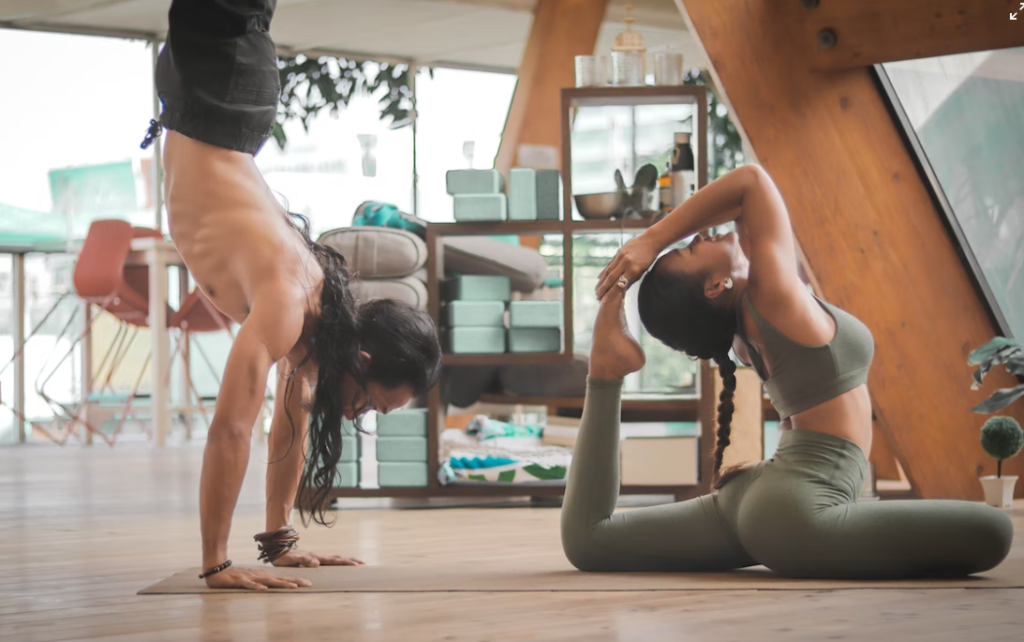Visualisation Therapy Exercises
Learn therapy exercises that emphasize visualizing the desired result.

Selfpause Affirmation App
Download the app to get 1,000’s of affirmation meditations and everything you need to write, record and listen to your own.
Visualization therapy exercises are exercises that focus on visualizing the desired result. The more realistic and detailed the visualization, the better the results will be. Therapists encourage patients to use all their senses, including taste, sound, and sight when they visualize. Patients are also encouraged to practice visualization therapy exercises outside of their sessions.
Guided imagery

Guided imagery is a method of visualizing a peaceful scene and a calm body. The use of this technique can reduce feelings of anxiety, stress, and depression. It also helps improve overall health. It uses all senses, including vision. It can also reduce the perception of pain.
The first step is to find a quiet place to practice guided imagery. You can sit in a comfortable chair or lie on the floor. To increase the relaxing effect, try taking long, deep breaths. Then, follow the instructions of the guide. You can also use a sound machine or even music to make the imagery more pleasant. To get the best results, you need to practice this method on a daily basis.
Guided imagery can be practiced alone, with a group of people, or under the supervision of a professional. Whether you choose to practice guided imagery yourself or with a professional, you should practice it by following a script or guide to avoid pitfalls. In general, guided imagery sessions usually begin with relaxation exercises and conclude with the exploration of visual images offered through cues. Some practitioners also collaborate with their clients to co-create images.
Guided imagery helps people cope with stress and pain by guiding them to imagine a calm place. This technique is very effective when it comes to reducing negative feelings and stress. It teaches the power to alter one’s focus and feelings and is ideal for beginners.
Creative visualization

Before starting visualization therapy exercises, it is crucial to determine whether you’re ready for them. If your life seems chaotic or you have limiting beliefs about yourself, you may not be ready to practice creative visualization. Limiting beliefs can include thoughts that you’re unintelligent, ugly, or unstable. You may also feel bad about yourself.
A key aspect of creative visualization is creating affirmations. This process allows you to create new possibilities that are better than your current vision. It also reminds you that the process is for both your benefit and the person whose mind you’re trying to reach. If you experience doubts, resist them by acknowledging them but returning to the positive statements.
In order to use creative visualization effectively, you must first determine the exact goal you’re trying to achieve. Visualizing the desired outcome requires great focus. To do this, write down the reasons why this outcome isn’t present in your reality. Once you’ve written down these reasons, you can begin to imagine how it would look if you had achieved your goal.
Creative visualization can help you change your life by affecting your physical appearance, mood, and behavior. It can also enhance your self-esteem and increase your social life. Everyone uses creative visualization on a subconscious level. For example, when we are hungry, we think about food and we imagine going to the kitchen to get some. We use this process unconsciously to change our reality.
Relaxation techniques

Relaxation techniques using vision therapy exercises are a great way to relax your muscles and get some rest. You can begin with your toes and work your way up to your neck. Ideally, you should perform these exercises in a quiet space with no interruptions. While you relax your muscles, visualize a peaceful place, and then repeat the process as many times as you like.
When practicing visualization therapy exercises, you need to focus on all of your senses. For example, if you are trying to relax while sitting on the beach, try to picture the waves crashing, the smell of salt water, or even the warmth of the sun. You can also focus on your breathing.
If you can’t get to a relaxation session, try listening to an audiotape or using guided imagery. Both types of techniques can help you calm your mind and boost your mood. Regardless of how you learn to relax, the first step is to find a technique that you like. While some techniques will work for everyone, others will require some trial and error to find a technique that works for you.
One of the most popular relaxation techniques involves using guided imagery. In this technique, you visualize a peaceful place and focus your attention on this image. You can do this on your own or with a qualified imagery practitioner. This method can be beneficial for people with anxiety and stress, but it is also effective for people with a variety of health issues.
Stress reduction

Visualization techniques are a common means of stress reduction. They involve the systematic practice of forming a mental image of a peaceful setting. These techniques can be used alone or in combination with progressive muscle relaxation techniques. The goal is to associate the physical sensations of relaxation with the peaceful visual image.
Visualization exercises can help people deal with stress and anxiety in different situations. These techniques help people re-focus their attention away from the problem area and focus on the present situation. They also help people deal with a definite outcome. For example, people can use guided imagery to imagine completing a specific goal or working through a difficult situation. Visualization exercises are usually a simple matter of closing your eyes, taking a deep breath, and visualizing a peaceful place.
To make the visualization exercises more effective, participants should use all of their senses. The more details they can imagine, the more likely they are to feel relaxed. Generally, they take about two to three minutes to complete. To make them more effective, people should also prepare by performing another relaxation exercise before doing the visualization exercises. They should feel their stomach rise and fall as they breathe in and out. They should repeat this breathing exercise at least 10 times.
Before you begin your visualization exercise, prepare your environment. Make sure there is no noise or other distractions. Choose a quiet room or location and remove any clothes that restrict your movements. Then, lie down or sit comfortably in a position where you feel comfortable.
Performance under pressure

Visualization exercises are a popular way to improve performance under pressure. These exercises involve focusing one’s attention on a particular task. A sports psychologist or coach can help athletes with these exercises. The key to visualization exercises is to have a purpose for the exercises. By identifying a specific goal, the exercises can be planned more efficiently and effectively.
Visualization helps athletes improve their performance under pressure by improving their physical and psychological reactions. When athletes mentally practice a task or action before a big game, they are less prone to becoming anxious or tense. They also improve their attention and reduce muscle tension. This method is widely accepted among high-level athletes.
Performance under pressure is a key component of sport and the excitement that comes with it. Therefore, athletes must learn how to cope with the pressure to perform at their peak. Every team needs players who are able to execute when the pressure is on. Performance under pressure can be enhanced through vision therapy exercises and meditation.
One type of visualization exercise is guided imagery. This type of visualization uses recorded recordings to guide the patient through the process. A guide will start the visualization with a blank canvas and gradually add details. Many guided imagery recordings are available on the Internet, YouTube, and other media channels. These recordings can be downloaded onto mp3 players and can be used as a visualization tool. There are also apps that offer guided imagery exercises.
Compassion
Compassion through visualization therapy exercises is designed to increase compassion in the mind. These exercises use guided fantasies and memories to create a calming and relational image in the mind. They can also help you deal with self-attack by picturing an aspect of yourself as someone else. This can help you make more compassionate decisions and stop intrusive thoughts.
Compassion through visualization exercises begins with a calming, rhythmic breath. Next, imagine a color that evokes compassion. This color can be any color as long as it reminds you of a compassionate feeling. Then, allow the color to enter the heart area of the body. Once the color has entered, imagine the color spreading throughout your body. You may even visualize it as a mist or light.
Compassion through visualization exercises can also help you focus on other people. When you imagine someone you love, imagine them with a beam of warm blue light traveling toward them. When this beam of light reaches them, it will carry their wishes. During this exercise, focus on being kind and gentle.
Visualization exercises can help you focus on a difficult subject. The key is to focus on a positive experience. By imagining a kind, compassionate place, you can help yourself become more compassionate. You will also be able to stimulate different parts of the brain that are associated with compassion.
Our Top FAQ's
Some examples of visualization therapy exercises include creating a peaceful scene in your mind, visualizing yourself achieving a specific goal, or using visualization to work through a difficult situation or emotion. Other visualization exercises might involve focusing on specific body sensations or creating a mental image of a place that brings you feelings of calm and relaxation.
Visualization therapy, also known as guided imagery or relaxation therapy, is a form of mental visualization in which the therapist guides the client to use their imagination to create positive images or scenarios in their mind. The goal of visualization therapy is to help the client relax and reduce stress, and it can also be used to help people achieve specific goals, such as improving their physical or mental health.
Visualization therapy can be used to treat a wide range of mental health conditions, including anxiety, depression, and stress. It can also be used to help people cope with chronic pain, improve their sleep, and reduce the symptoms of other medical conditions.
The frequency and duration of visualization therapy exercises will depend on the individual and the specific goals of the therapy. Some people may benefit from daily visualization exercises, while others may only need to practice visualization therapy once a week or less. As for duration, each visualization session can last anywhere from a few minutes to over an hour, depending on the specific exercise and the needs of the individual.
While visualization therapy is generally considered a safe and effective form of treatment, it’s important to keep in mind that it is not a substitute for professional medical or mental health care. If you are experiencing severe or persistent mental health symptoms, it’s important to seek help from a qualified healthcare provider. Additionally, visualization therapy may not be suitable for everyone, and it’s important to discuss any concerns you have with your therapist or healthcare provider before starting visualization therapy.
